Pre-warming of eggs prior to incubation is a common practice of most hatcheries in the world, either running single or multistage machines. It allows the embryos to achieve a homogeneous temperature before the incubation starts, which promotes a more uniform development in the beginning.
What is the correct pre-incubation time and condition?
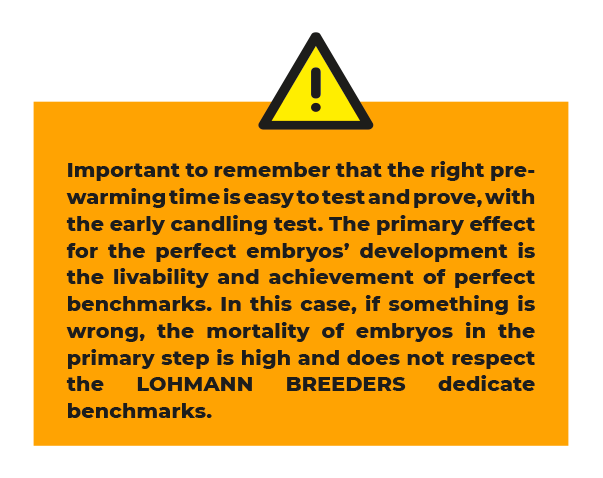
Pre-warming not only provides chicks with uniform development speed, but also, it is the most important tool to prevent condensation, especially in multistage systems when eggs are loaded with other batches of eggs in different stage of development.
Moreover, pre-warming of eggs can be even more beneficial for the eggs already in the incubators (in case of multistage system) than it is for pre-warmed eggs themselves.
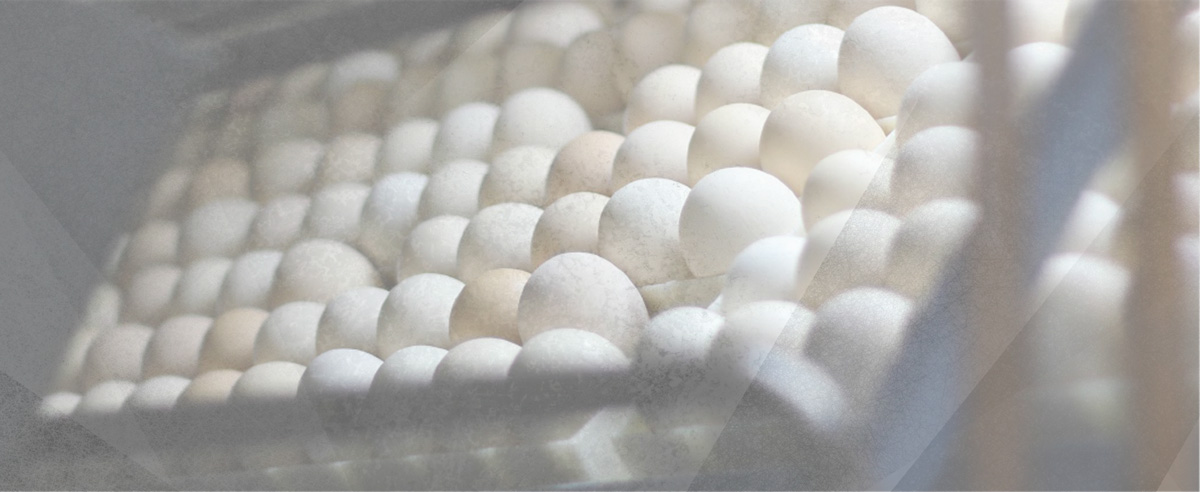
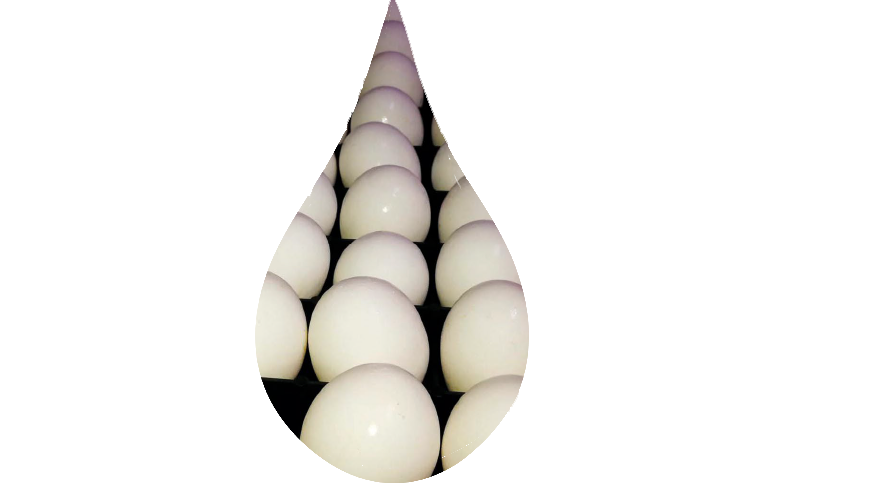
Initially, let´s discuss condensation as it is the first challenge to overcome when we think about prewarming. Why does an egg condensate or sweat? It is for the same reason a beer condensates when we take it from the fridge. Water drops we see on the can or on the egg surface do not come from inside as some may think. So, condensation does not mean dehydration for the eggs.

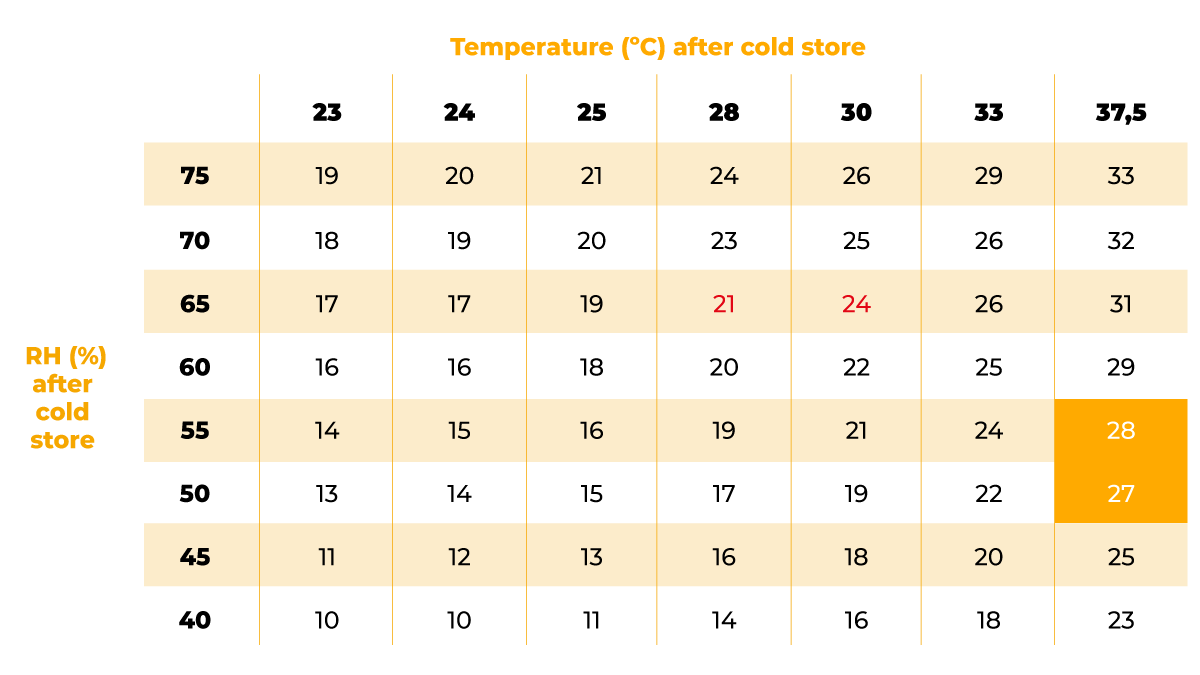
And how to avoid it? Hatchery managers should know the basics of psychometrics. Although a complicated name, its principles are easy to understand and apply. To make it simple, we have made the table below from a psychrometric chart or Mollier diagram.
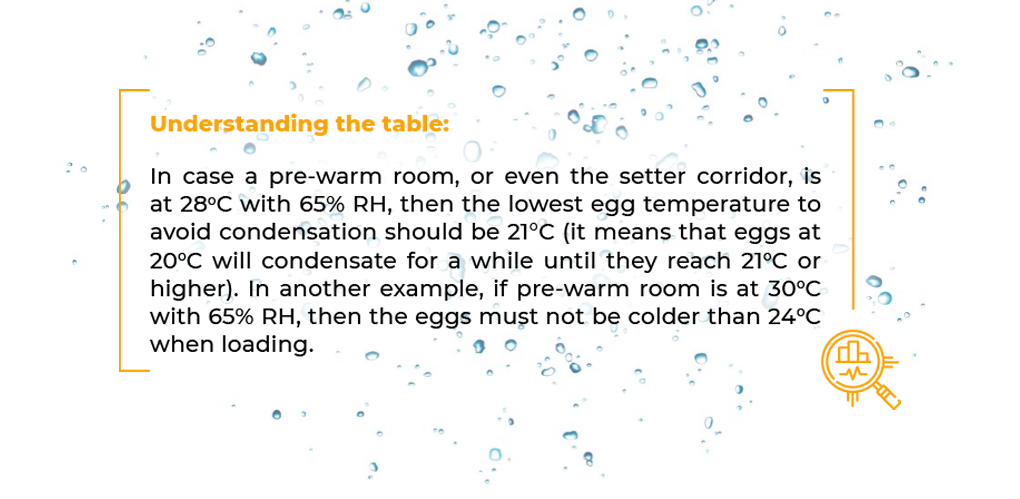
If we connect the temperature on the header of the table (37,5ºC) to the RH on the left side (50-55%) we will have pretty much what most multistage hatcheries have as profile for setters. It means that, to avoid condensation, eggs must be loaded into multi-stage machines at a minimum of 27ºC. Thus, pre-warming for this kind of machines should be made at a minimum of 27ºC.
In case the pre-warming room has a high relative humidity enough to make the eggs to reach dew point and sweat, a dehumidifier installed in the room can help substantially. It removes the excess of water, making it virtually impossible to reach dew point. The good news is that a dehumidifier for a pre-warming room is a simple and cheap equipment.
For single stage system, we must follow the same rules on the table above. However, as the machines are empty, the pre-warm temperature can be much lower, usually the same as the setter corridor, around 24-26ºC with 50% RH.
In that case it is much less likely that eggs will condensate and, because of that, pre-warming can be carried out at a lower temperature, as per manager’s decision.
When incubation program starts, temperature will raise gradually, which also avoids condensation.
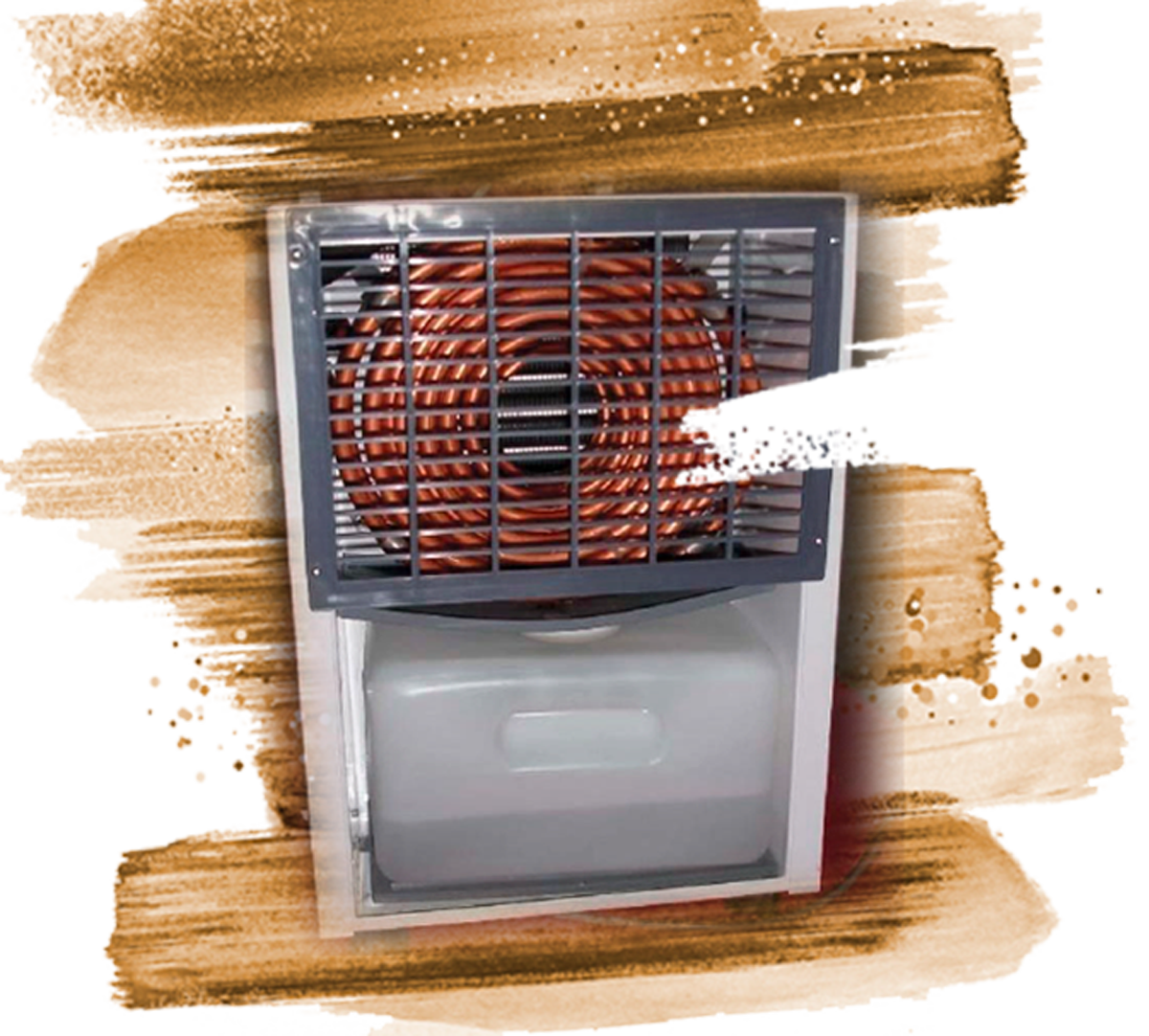
Image 1. A dehumidifier installed in a pre-warming room, with its reservoir being filled with water previously present in the air as vapor. By collecting this water, Relative Humidity in the environment drops to a level where dew point will never be reached when eggs are brought in.
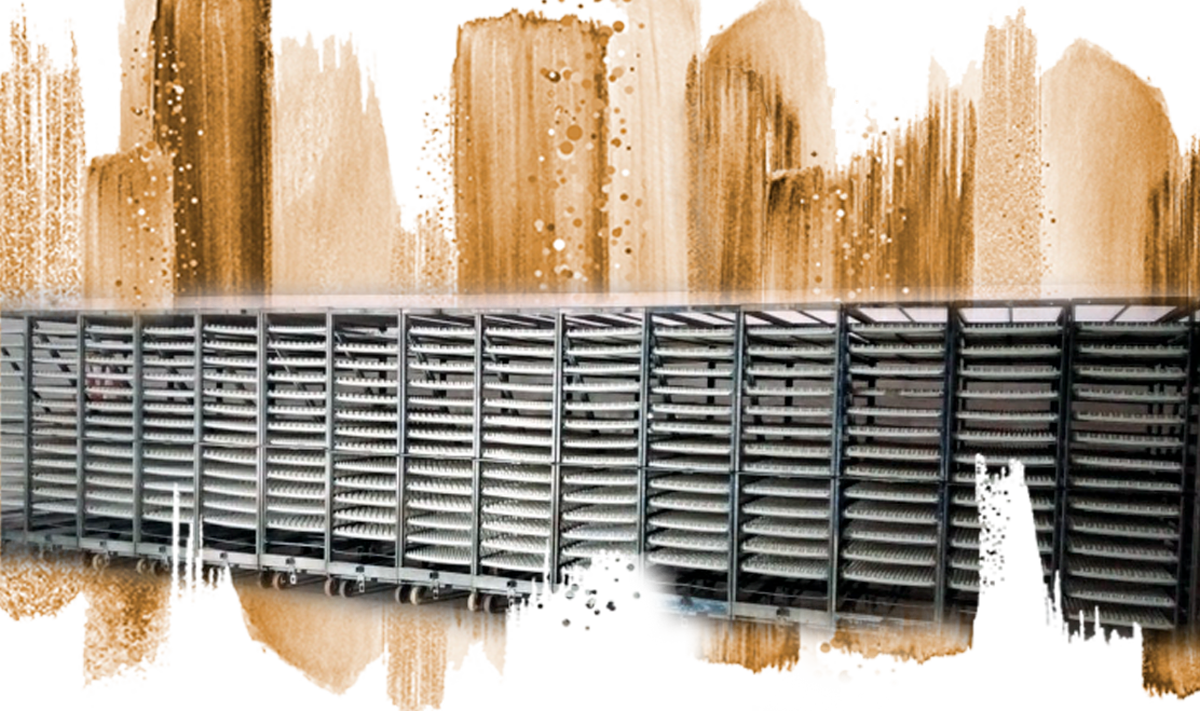
Once we understood how important it is to prevent condensation, now it is time to understand why it is important to heat up the eggs as high as possible, especially in multistage systems.
If eggs are loaded in a multistage machine without any pre-warming procedure, their cold mass will negatively influence the already set eggs, making their temperature do go down for a long time (not only machine’s temperature goes down).
Until the machine can overcome it by constant activation of heaters and dampers closure. Even when we prewarm them, there is a negative effect.
The warmer the eggs are loaded, the less harm they’ll cause to the existing eggs in the machines.
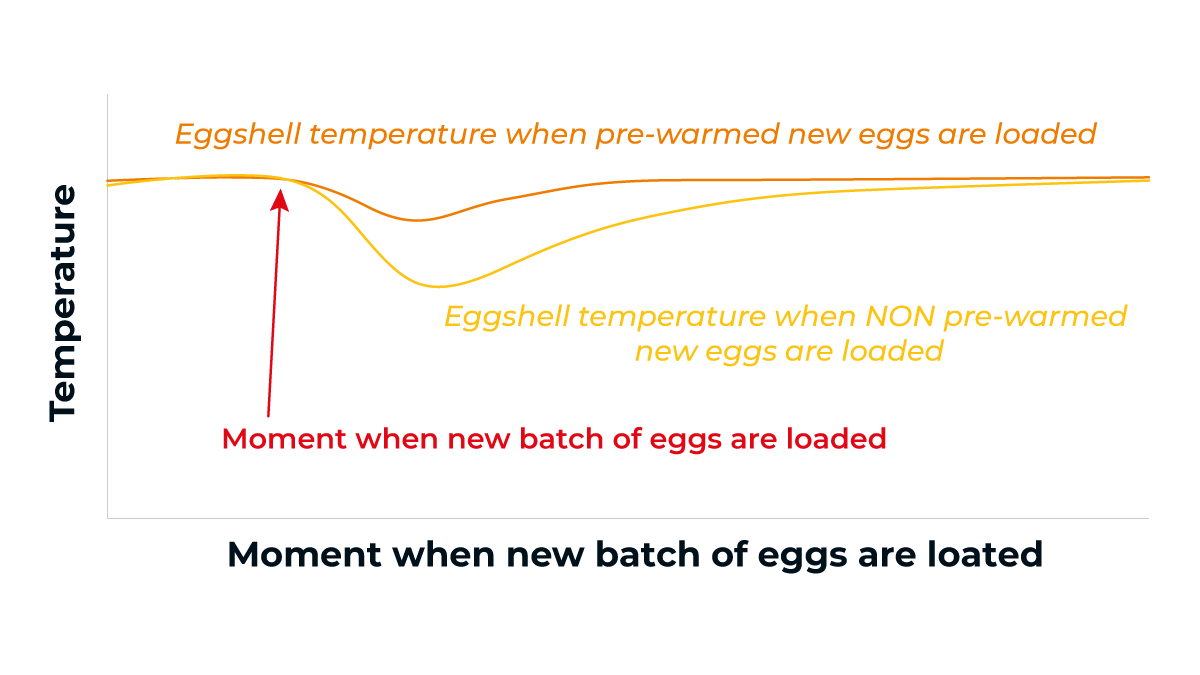

The best way to ventilate a large batch of eggs is by means of uniform airflow through each tray and this can be achieved by either using an empty machine or by having a dedicated well designed pre-warm room.
The pre-warm room can be a simulation of a tunnel ventilated chicken house, with air recirculation, since at this age, embryos need no fresh air at all.

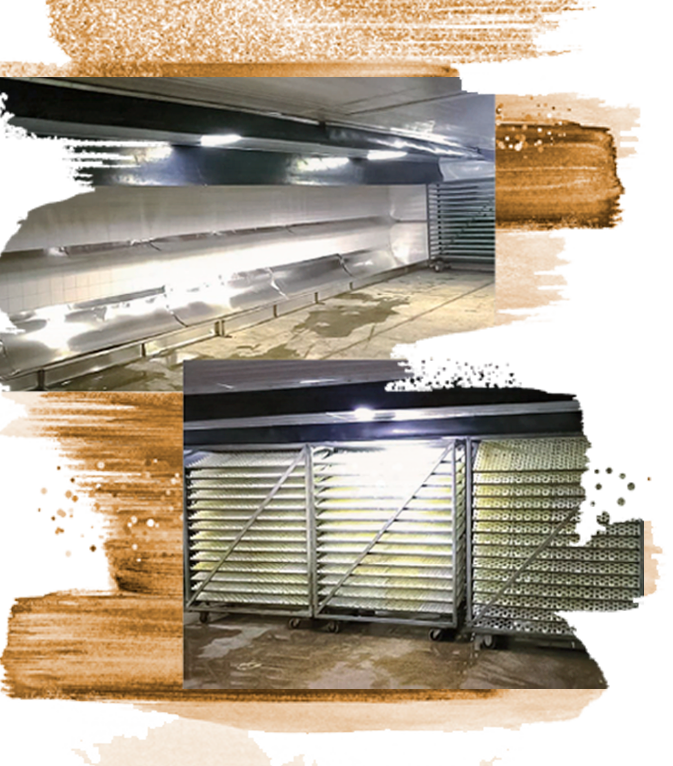

Once the room is known, then it is a matter of calculation on how many extractors need to be installed to provide eggs with desired air speed. The use of deflectors on corners and eventually in some other strategic positions prevent air from seeking the way of least resistance.
Please, feel free to contact LOHMANN BREEDERS Global Technical Service in case you need any help with this important step of the incubation process.
Subscribe to our Newsletter
And find out about all the latest industry news.



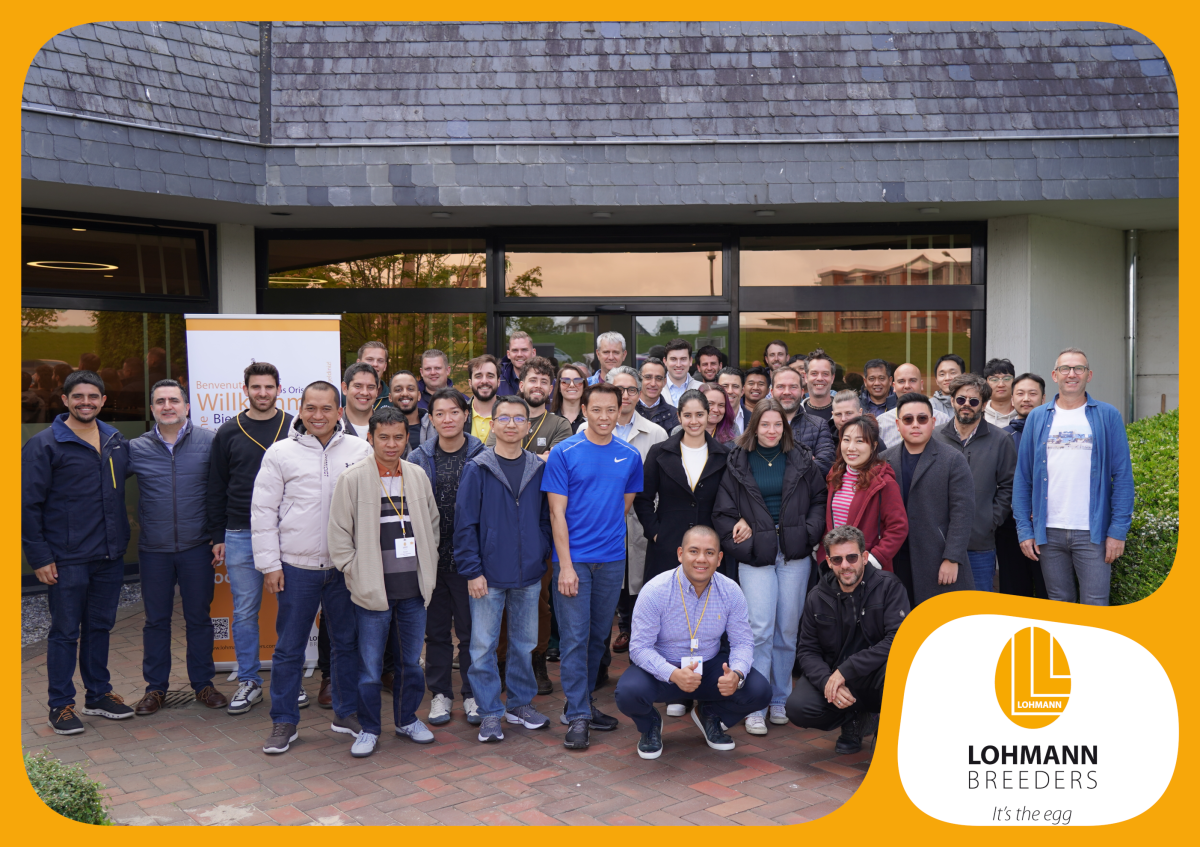



 Incubation
Incubation 